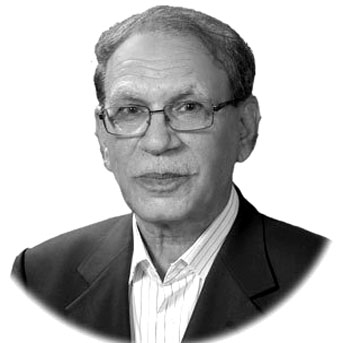Mohammad Jamil
AFTER revoking Articles 370 and 35-A of Indian Constitution that gave special status to Jammu
& Kashmir, the final Assam citizens’ list has been released, leaving out more than 1.9 million Muslims. In August 2018, the controversy on preparing a registry of bona fide citizens of Assam on the basis of legal documents was further fuelled by BJP President Amit Shah who described illegal Bangladesh immigrants as “termites” eating into Indian resources. After the abolition of Article 370 of the Constitution, 10 other states Arunachal Pradesh, Assam, Himachal Pradesh, Manipur, Meghalaya, Mizoram, Nagaland, Sikkim, Tripura and Uttarakhand that enjoy special category distrust the Indian government because of Modi’s actions. It has to be mentioned that special category status was granted to them by the National Development Council on the recommendations of the Planning Commission to states that needed special consideration. However, Modi is on collision course.
Some of the significant separatist movements in India include Naxalites or Maoists, which is second major freedom movement in India after IoK. Former Prime Minister of India had called Maoist insurrection the single biggest internal-security challenge. Maoists inhabit an area known as the ‘Red Corridor’ that stretches from West Bengal to Karnataka state in the southwest. They are active across 220 districts in 20 states forming about 40% of India’s geographical area. They also threaten to extend operations in major urban centres including New Delhi. Indian intelligence reports say that insurgents include 20,000 armed men and 50,000 regular or fulltime organizers and mobilizers, with the numbers growing. The seven states of northeastern India called the Seven Sisters are rocked by a large number of armed and violent rebellions. They accuse New Delhi of apathy towards their issues such as illiteracy, poverty and lack of economic opportunities.
Tamil Nadu is another area where separatist movements are haunting federation of India. In the wake of their defeat by the Sri Lankan military in the Jaffna peninsula, the Tamil LTTE freedom fighters took refuge in the adjoining Tamil Nadu State of India, where on account of common ethnicity, religion, language and culture they mixed easily and enjoyed mass support for their cause. Overtime LTTE had regrouped and recruited volunteers from amongst the Sri Lankan Tamil refugees and the local population and began to amass weapons and explosives. There is a strong anti-India and pro-secessionist sentiment in Tamil Nadu. Most people want independence from India despite sharing a common religion, Hinduism due to Indian government and especially fascist methods of PM Narendra Modi. Northern states feel that Modi could strip those states off special status, and could ride a rough shod over them.
Nagaland, which has had an uneasy relationship with the mainland, is wary of National Democratic Alliance (NDA) promises because of the Naga Peace Accord, 2015, held up by slow progress of talks and the controversial Citizenship (Amendment) Bill 2016. However, the writ of the government is said to be confined to state capital Kohima; and the rebels have parallel administration in Nagaland and the Naga-dominated areas in neighboring Manipur, Arunachal Pradesh and Assam. Rebel groups have for several decades imposed taxes and collected donations in the name of “national work”, and even resolve family and farmland disputes. The most volatile state after the Union Government’s moves in Jammu and Kashmir is Nagaland. Though Nagaland has special provisions under Article 371-A which was inserted following the creation of the state of Nagaland, the very creation of the state became the motive for a fresh insurgency under the National Socialist Council of Nagaland (NSCN).
In Mizoram, former Chief Minister of Mizoram, Lal Thanhawla, has made his position on the developments in Jammu and Kashmir clear through a tweet on 5 August. He tweeted: “It has become a threat to states like Mizoram, Nagaland and Arunachal which are protected by the Constitution. If 35-A and 370 are repealed, Article 371-G, which safeguards the interests and existence of lesser tribals of Mizoram is under severe threat.” Other political parties in Mizoram have also condemned the move. People’s Representation for Identity and Status of Mizoram (PRISM) has sounded the alarm and urged the ‘indigenous people’ of the northeast to be prepared. Like Manipur, Sikkim’s accession to the Indian Union was perceived by many as coercive; the state has retained its old laws minus the monarchy and flag through Article 371F. But, many in Sikkim lament the dilution of the old laws.
The staunchest opposition to the idea of merging Sikkim with Darjeeling appears to come from the Nepali speaking communities. Following the Union Government’s actions in Jammu & Kashmir, it appears that people are apprehensive this time in Sikkim. However, in international law, only sovereign states are capable of entering into treaties, repealing Article 371-F would legally return Sikkim to its sovereign status. In Tripura, the BJP Chief Minister Biplab Dev lauded the Union Government, whereas the alliance partner, Indigenous People’s Front of Tripura (IPFT) opposed the decision. Conscientious elements are concerned over the maltreatment of the minorities in India, and they believe that under Modi India is on the path to perdition and complete ruin. Minorities in India are getting a raw deal; especially the Sikh community could hardly forget what happened to them in 1984 during operation at Golden Temple.
—The writer is a senior journalist based in Lahore.










